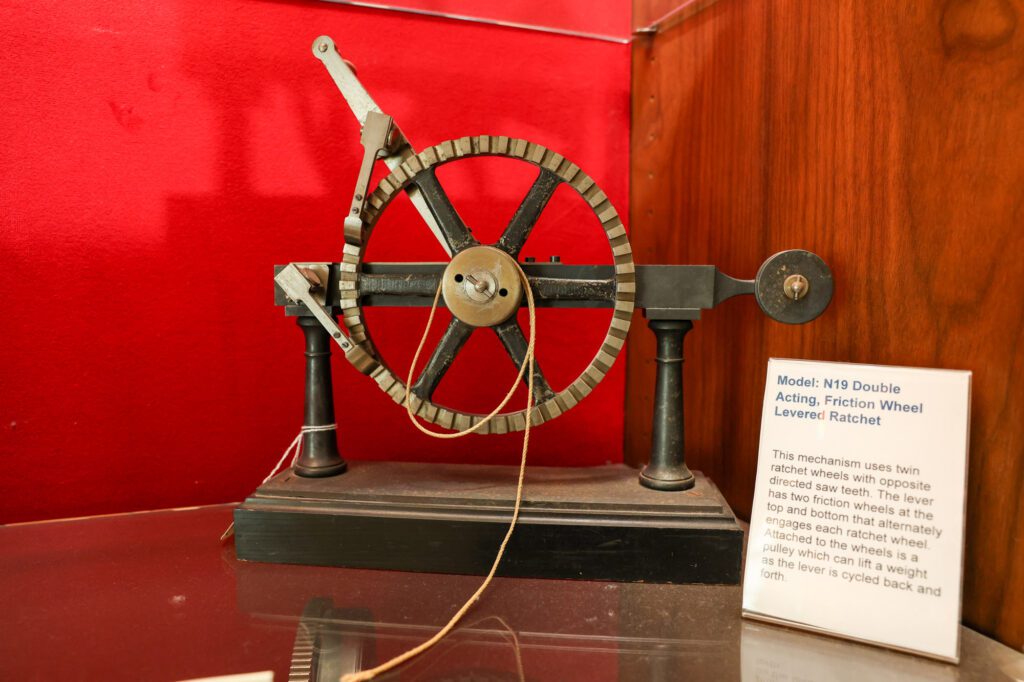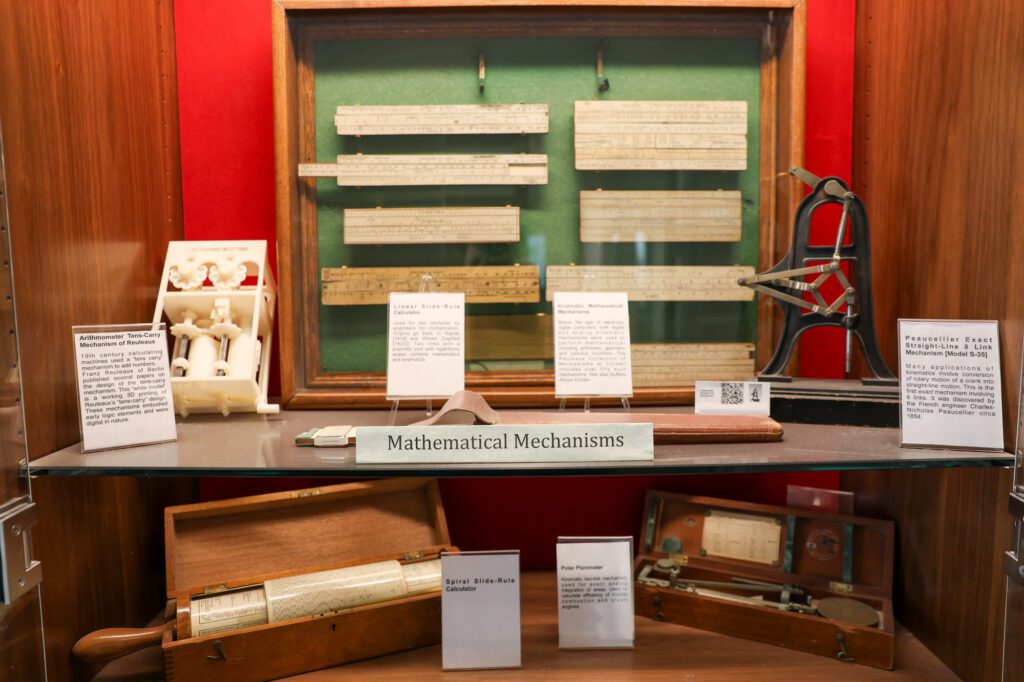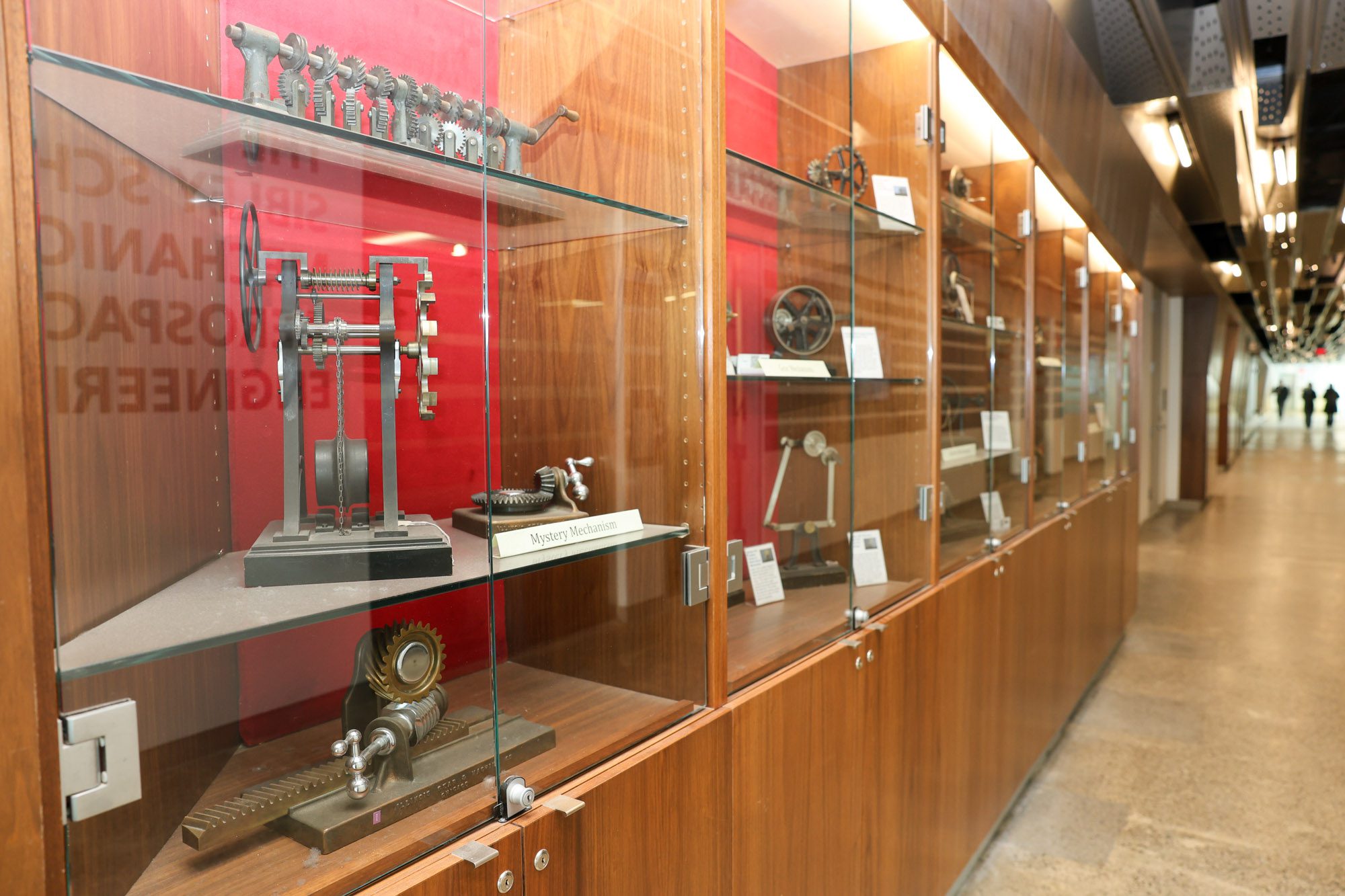Shaping Engineering Education
Throughout the late 19th and early 20th centuries, models from the Reuleaux Collection played a key role in shaping engineering education at Cornell, particularly as mechanical engineering transitioned from a hands-on “shop culture” to a more scientific and mathematical approach. The models provided a way for students to visualize and physically manipulate mechanisms, reinforcing concepts taught in lectures. Students used the models to explore fundamental machine components like gears, cams, linkages, and escapements. Some of the models illustrated common engineering problems, such as converting circular motion into linear motion – critical for designing steam engines, clocks, and other machinery of the time.

Pieces of History
The Reuleaux Collection was developed by German engineering professor Franz Reuleaux, a pioneer in the science of motion and a forerunner of modern machine design theory. His collection of over 800 models demonstrated how mechanical components could be systematically analyzed and combined to create new machines. Unfortunately, most of the Reuleaux machines stored in Europe were destroyed during World War II, making Cornell’s collection one of the largest surviving sets.

See the Collection
Today, much of the Reuleaux Collection is on display throughout Upson Hall and remains a valuable historical resource, offering insight into the evolution of machine design. While kinematics as a standalone discipline declined with the rise of computational design, the study of mechanisms continues to be essential in industries such as aerospace, robotics, and manufacturing.
The collection can also be viewed as part of the Kinematics Models for Design Digital Library, developed at Cornell as an open-access, multimedia resource for learning about kinematics and the history and theory of machines.

